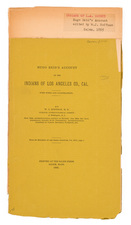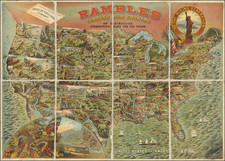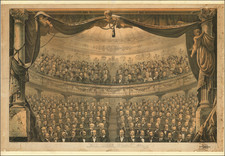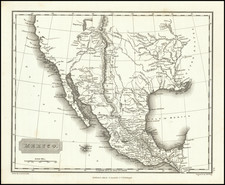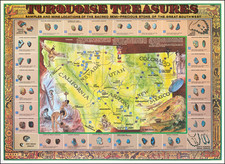Rare pictorial letter sheet, showing a birdeseye birdseye view of Jametown, engraved by G.H. Goddard and printed by Britton & Rey in San Francisco.
The view shows two bridges across Woods Creek, looking northward toward the town of Jamestown from down river. The view is one of the earliest surviving views of Jamestown, showing the townsite less than 5 years after the first discovery of Gold in California and already a thriving local hub of activity.
"This beautiful, double-size letter sheet, was drawn by G. H. Goddard, a fine artist, though little known. His map of California, lithographed and published in San Francisco in 1857, is the first accurate map of this State"
(Grabhorn, California Gold Rush Miscellany, p. vii, illustrated facing p. 37).
"Gold rush settlement of Tuolumne County just southwest of Sonora, named for an early settler and alcalde, Col. George F. James.... It is generally called Jimtown, as in the stories of Prentice Mulford, who taught school there."
Peters, California on Stone, pp. 85 & 124.
Gold was first discovered in Tuolomne County in 1848. The first discovery was by, Benjamin Wood, an Oregon Prospector and his party, which included James Savage. They called their camp Woods Crossing, and the creek Woods Creek. About a year later when easily found gold disappeared, the settlement began to move a mile east to the site of present-day Jamestown.
Jamestown was named for Colonel George James, a flamboyant early speculator and minor who employed a number of Native Americans and locals. When Colonel James suddenly departed in the night leaving many miners and investors unpaid, they angrily changed the name of Jamestown to American Camp. That name did not catch on so the name went back to Jamestown or "Jimtown". Later in 1850 there was a movement to form a new camp in the northern portion of Jamestown and call it Georgetown, but citizens voted on May 25, 1851 to call both camps by one name, Jamestown, which has remained ever since.
Jamestown was a center of mining, transportation and trading activity. In town there were many businesses such as a bank, livery stables, doctors offices, drug stores, butcher shops, hotels, saloons, a Masonic Hall, bakery and others. In 1852, the Jamestown Methodist Church was first constructed.









![Map Showing the Summer Resorts on the Pacific Coast, adjacent to the lines of the Central and Southern Railroads. [California Tourist. Yosemite, The Big-Tree Groves Geysers, Monterey and other Popular Summer Resorts of Californa]](https://storage.googleapis.com/raremaps/img/small/41461.jpg)
